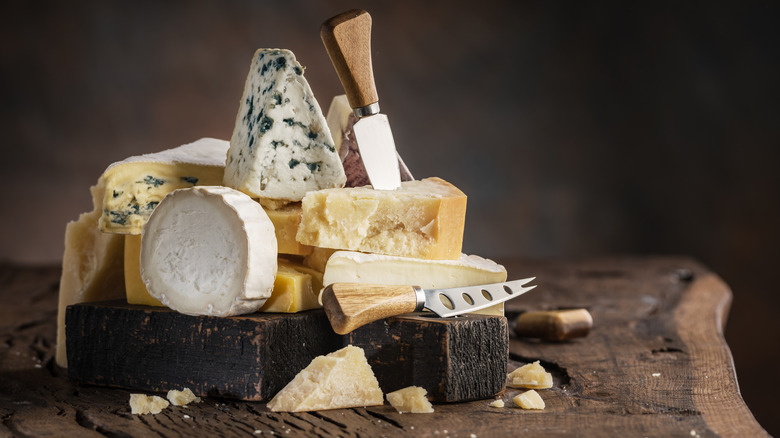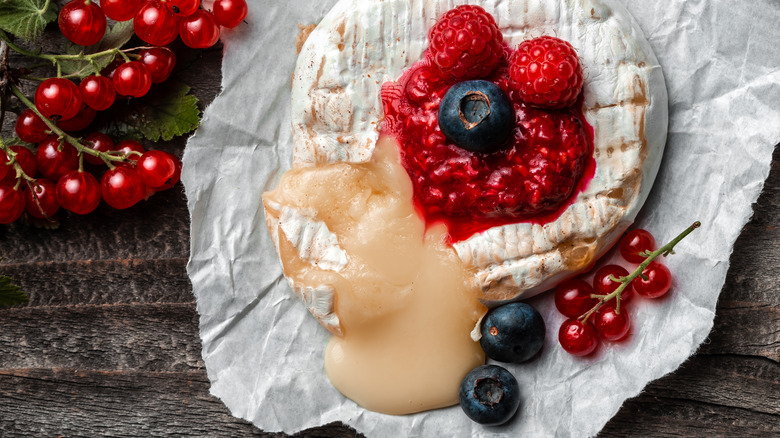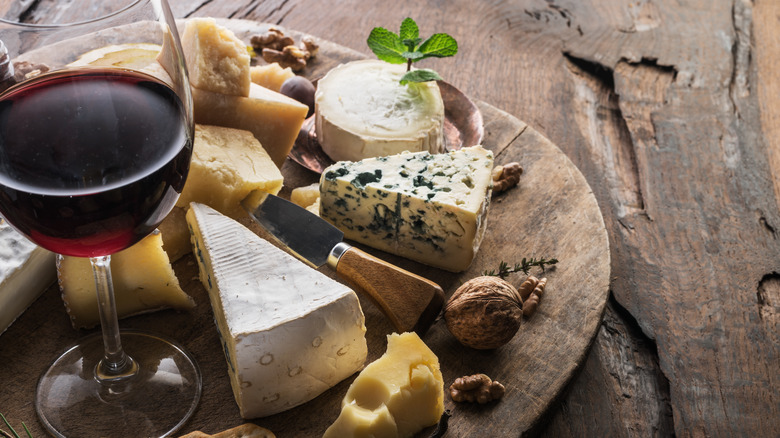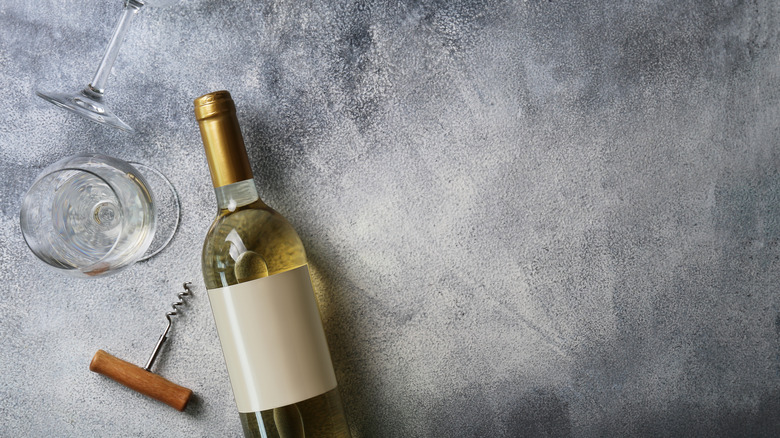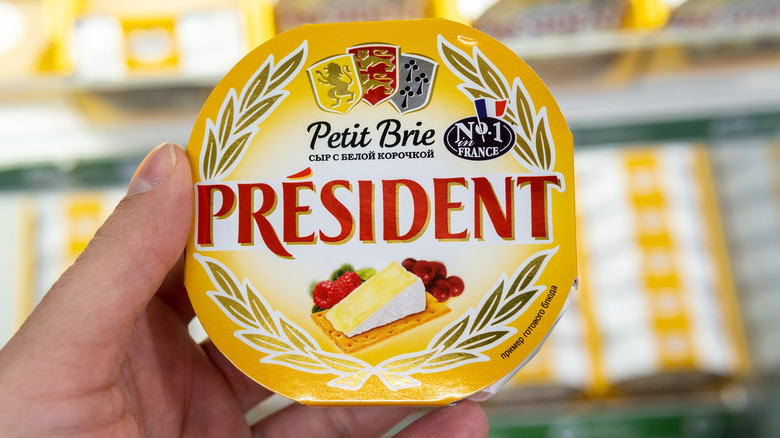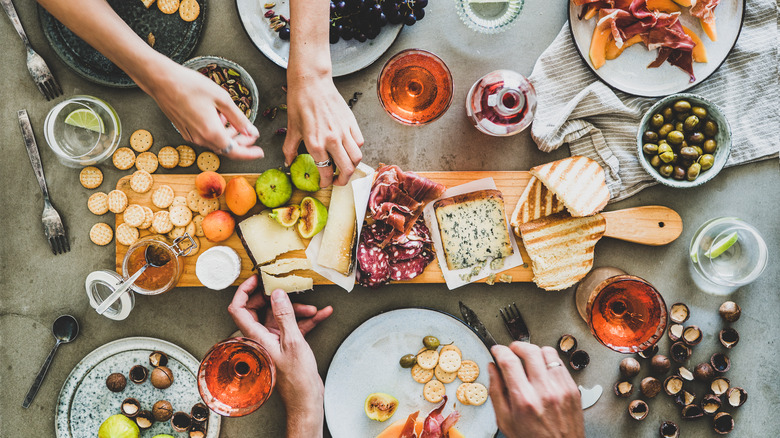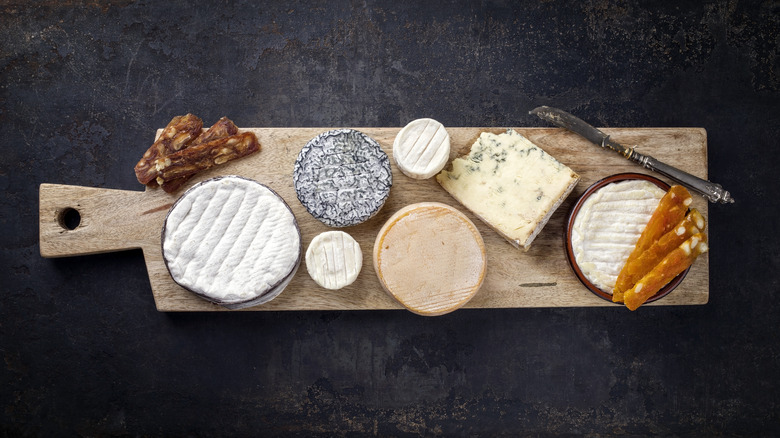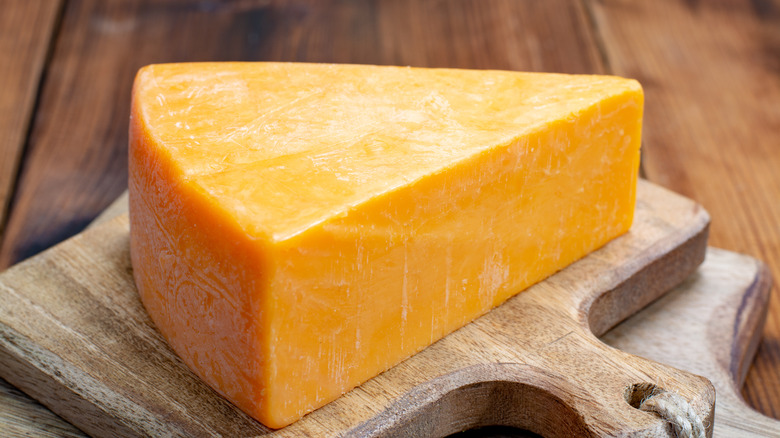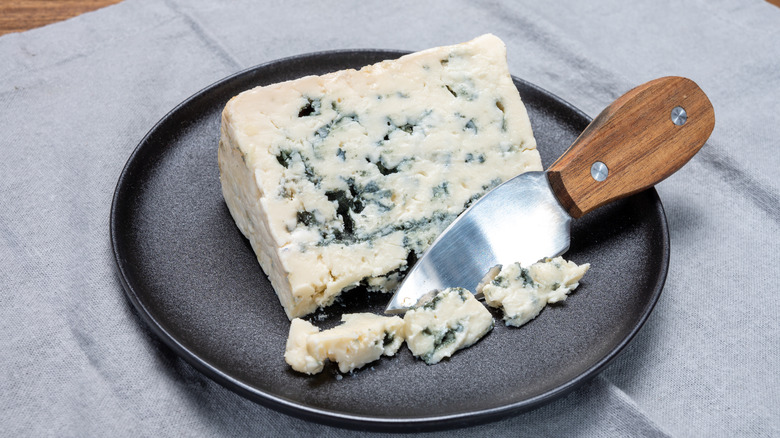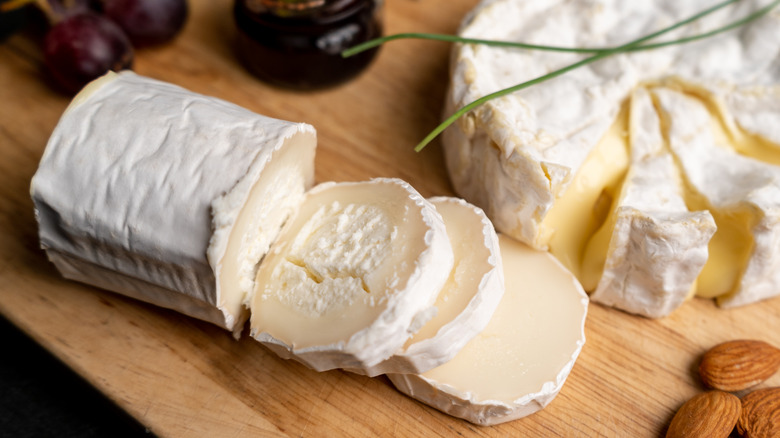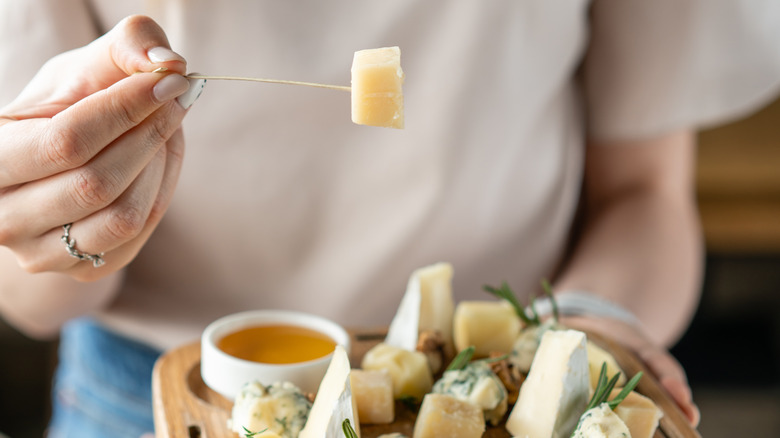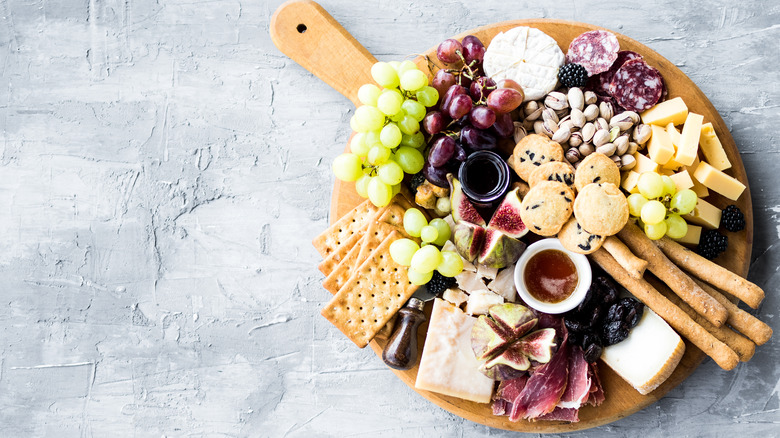12 Things You've Got Wrong About French Cheese
Cheddar cheese is naturally yellow; brie and Bordeaux make the perfect pair. These common misconceptions (and more!) are about to be challenged by cheese experts in the heart of fromage: France.
Cheese is a bona fide foodie favorite, with somewhere between 37 pounds of cheese consumed per capita in the U.S. each year, according to data from the USDA. That's a marked increase from 1977, when Americans were only eating 21 pounds a year per person — and we're talking about a period when cheese fondue was at the height of dinner party fashion!
The long and short of it is that we love cheese — and not just because it's addictive. And while phenomenal cheeses are made all over the world, from the British Isles to Italy, from Nepal to Wisconsin, French cheese is renowned the world over for its quality.
And yet, in spite of its fame, there are still some major misunderstandings surrounding this quintessentially French product. With help from experts, we're here to bust the some of the biggest myths surrounding cheese. So pull up a chair, break out the cheddar, and dig in.
Runny French cheeses are higher in fat
Cheese is far from a low-fat food, but some cheeses are indeed lower in fat than others. That said, low-fat cheese aside (*shudder*), folks commonly misconstrue which cheeses are really lower in fat: While you might think that a firm cheddar is better for your diet than a runny, gooey Brie, in reality, the opposite is true.
"Softer, runnier cheeses contain more water (whey) and therefore have a lower fat content," explains Jennifer Greco, cheese expert and educator with Context Travel, to Mashed. In other words, the runniness of a creamy, oozy cheese isn't fat: It's water.
Let's look at the numbers. A runny cheese like Brie is about 28 percent fat by weight, while a harder cheese like, Cheddar or Comté, is somewhere in the realm of 33% to 34% fat. The exception to this rule? The double- and triple-cream versions of gooey bloomy-rinded cheeses like Brillat-Savarin, which can clock in at about 40% fat.
If fat content is your most important cheese-choosing criterion, however, than you might like funky sheep's milk feta, which contains just 21% fat by weight.
French cheese and red wine make a good pair
While it might seem like some Brie cheese with a glass of Bordeaux wine are the perennial perfect pair, in reality, this is one of the worst associations you can make.
"Bold red wines can dominate your palate and overwhelm cheese, making for a disappointing experience," French cheese expert Jennifer Greco of Context Travel tells Mashed.
Caroline Conner, wine educator behind Wine Dine Caroline, agrees.
"Red wine and cheese is actually a lot more difficult because of tannins and bitterness, [which] often, in my opinion, kind of mess with cheese, especially washed rind cheeses and creamy cheeses like Brie," Conner says to Mashed. "They kind of make the red wine feel metallic."
If red is your preferred wine color, Greco recommends "light, fruity reds made with Gamay or pinot noir grapes," which have the added benefit of echoing historical pairs.
"The red wine and cheese tradition goes back to when farmers drank a lighter, fruitier red that was very low in tannins and therefore didn't clash with the flavors in the cheese," explains Greco. "The belief that red is the best drink to serve with fromage still lingers today."
White wine doesn't pair well with French cheese
If you really want to show off the best in your cheese, take note: "White is definitely easier and better with cheese, generally, across the board," says Caroline Conner, the wine educator behind Wine Dine Caroline, to Mashed. Conner recommends unoaked chardonnay, like Chablis, a type of wine with 100% chardonnay grapes that boasts texture with good acidity.
"Even a little lightly oaked chardonnay from Burgundy would be really good with cheese," Connor adds.
Damien Richardot, founder of fromagerie and cheese-focused restaurant Monbleu, agrees. Dry varietals like Sylvaner and Pinot Gris from Alsace in northeast France, Altesse grapes from the Savoy region in the southeast, or the specific regional pairing of nutty oxidative Savagnin wine with local Comté cheese (from the Comté region in the east), which brings out the best in the rich cheese's almost caramel aromas, are all recommended, Richardot tells Mashed.
The end goal of any pairing, Conner notes, is to keep the cheese and wine from "fighting," and there are no two worse bedfellows, according to Richardot, than cheese and young Bordeaux.
"Cheese and wine pairing is definitely an art," says Conner. "Not all cheese goes with all wine."
French Brie you buy in the States is the same as the Brie you buy in France
When you see a pretty wedge of imported Brie in the U.S., be forewarned: Despite what the red-white-and-blue sticker may convey, this is not the same Brie you'd be finding in your local fromagerie in France.
Since American Bries are mostly pasteurized, they have "a different texture, flavor and aroma" than the Bries you'll find in France, according to Jennifer Greco of Context Travel.
"The current laws in the U.S. don't allow unpasteurized cheeses that are less than 60 days old to be imported," Greco tells Mashed. "And because French Brie de Meaux and Brie de Melun are only aged for about eight weeks and are protected by the appellation d'origine contrôlée (AOC) system, they cannot be made with pasteurized milk, so they are difficult to find."
This wasn't always the case. In the 70s and 80s, as Brie was reaching peak popularity in the U.S., the FDA was beginning to explore the possible dangers of raw milk cheeses. In 1985, when it imposed the rule Greco mentions, raw milk versions of soft cheeses became a dream only achievable for Americans abroad (via Slate).
That said, there are some U.S. cheesemakers making "stunning" French-style Bries, according to Greco. The educator cites The Marin French Cheese Co, which makes a traditional Brie and a triple cream Brie, and Jasper Hill Farm's Brie-style Moses Sleeper as Stateside standouts.
French cheese is traditionally served as an appetizer or hors d'oeuvre
Most cheese boards served in the U.S. appear before the main event: as an appetizer served with drinks. In France, however, the opposite is true: A cheese board is served after the appetizer and main, just before the dessert.
This, as Jennifer Greco of Context Travel notes, is linked to a local belief that the natural enzymes in raw milk cheese help aid in digestion (a belief that studies have shown is true in some cases, notably with mature cheeses). That said, while the decision to serve cheese before the meal isn't traditional, it is beginning to catch on in France.
"Offering a board as an appetizer is becoming more common, especially with the rising popularity of the apéritif dînatoire, an evening that includes grazing on many dishes with drinks in lieu of sitting down at a table for a multi-course meal," says Greco to Mashed.
And for Damien Richardot, founder of fromagerie and cheese-focused restaurant Monbleu, this atypical choice may actually be the better way for a true turophile to enjoy their fromage.
"This American choice to have cheese at the beginning of the meal is one that I recommend heartily," Richardot says to Mashed. "Eating cheese before eating anything else means your palate and taste buds are better suited to enjoying it. And also, since cheese is fairly heavy, fairly fatty, even though it's traditional to have it at the end of the meal, that's not when most people would want it most."
French bread and French cheese make the perfect pair
Cheese and baguette might seem like a natural pair, but according to some experts, the pair is doing the cheese a disservice. To their minds, a cheese is best tasted on its own — at least, at first.
"Having your first taste without the bread really helps you get the texture," says Damien Richardot, founder of fromagerie and cheese-focused restaurant Monbleu, to Mashed. "And of course, there's the organoleptic side of things, so the smell. With some cheeses, you really do have a very pronounced smell, and flavor, and lots of texture, and you're going to have a much better idea of the texture without bread, because the bread's texture will take over."
That said, Richardot notes, bread can be a welcome accompaniment, especially with certain runnier cheeses like Saint-Marcellin, which when well-aged almost require a vehicle to get them from the plate to your mouth. And while tasting your cheese without bread is a recommendation, the restaurateur maintains that it's far from a hard-and-fast cheese-eating rule.
"There are thousands of possibilities," Richardot says. "For me, the best one is the one you most like."
France is home to 1,000 cheeses
Charles de Gaulle famously claimed it was impossible to govern a country with 246 cheeses... or was it 258? Or 365? The number isn't the only part of this apocryphal quote that's debated by historians, but one thing's for certain: France has a reputation for being a country that makes a heckuva lot of cheese.
"We're called the country of a thousand cheeses," Damien Richardot, founder of fromagerie and cheese-focused restaurant Monbleu, says to Mashed. "Or they say we have more cheeses than days in the year."
But the reality, he says, is that it's impossible to count all of the cheeses made in France.
"It could change any day," Richardot says. "Tomorrow, I could make a new cheese that's different from any other cheese out there."
What we do know, according to the restaurateur, is that France is home to 45 "Appellation d'Origine Protégée," or AOP, cheeses, each of which is heavily protected by a strict charter ("Appellation d'Origine Protégée" translates to "Protected Designation of Origin" (PDO)). This category of heavily protected cheeses includes most of the French heavy-hitters like Brie, Camembert, and Emmental.
But aside from that, says Richardot, "The answer is that there is no answer. And that's kind of nice. We can't know everything."
However you slice it, it's a pretty delicious conundrum to have.
Some French cheeses are naturally orange
While no one would dare put "natural" and "American cheese" in the same sentence, there are some all-natural Cheddars that are orange... right? Well, not exactly.
Back in the days where grass-fed wasn't even a question, the natural beta carotene content of cow's milk made itself known in the richness of its color, ranging from yellowish to orangey (though far from the garish hue of Velveeta or Cheetos). In 17th century England, farmers realized that they could double down on their investment by selling the cream separately from the cheese, but in doing so, they reduced the intensity of its color. To keep consumers in the dark about their cream-siphoning habit, they began adding pigment to the milk, rectifying the color with marigold or carrot juice.
The deeper colored cheese came into fashion, and dark orange Cheddars and Red Leicesters now abound not just in England but also in the U.S., with the added bonus of reducing seasonal variation in color, which would naturally be richer in spring and summer and more subdued in winter and fall. Today, most cheesemakers looking to make their cheese more orange use annatto, a natural food coloring made from the seeds of the achiote tree. But some producers, notably of Mimolette – a bright orange French cheese that more closely resembles a cantaloupe and, when well-aged, has a caramel aroma and a pleasant hit of bitterness — have returned to using local carrots instead.
French blue cheese is cheese that has gone moldy
Blue cheese is known as "parsleyed," (or "persillé") cheese in France, so named for the parsley-like appearance of the veins of blue mold that run through it. These veins are purposeful, and they don't come from letting cheese go bad.
To make blue cheese, producers first allow — not cheese, but bread – to go moldy, which spawns the production of Penicillium mold, a non-toxic spore also used in the production of penicillin. The spores are tossed with the curds of cheese before they are packed together, at which point channels are created through the cheese by inserting thin needles into it.
The spores continue to grow within channels, essentially becoming part of the cheese and giving it its distinctive flavor and aroma. But the mold itself is not a cheese mold but rather a bread mold — and it is not a side effect of cheese going off or bad. In fact, when blue cheese does go off, it usually sprouts a reddish mold, rather than a blue one.
French goat cheese has no lactose
Lactose-intolerant turophiles are often told to opt for goat or sheep's milk cheese for easier digestion, but this isn't necessarily because they contain less lactose. While experts note that goat's milk is thought to contain "slightly" less lactose than milk from cows, the real reason it's easier to digest is thought to be its natural homogenization.
The fat globules in goat's milk are small, far smaller than in cow's milk. As a result, they do not separate from the milk itself, as they do in cow's milk. This natural suspension of the fat within the milk is thought to be one reason it might be easier to digest, according to The Spruce Eats.
What's more, the fatty acid chains are also shorter in goat milk than in cow's milk, which experts note may account for its easier digestibility.
Either way, it's not true for all lactose intolerant people; if opting for goat cheese works for you, count yourself lucky! Some sufferers have to give up cheese altogether.
French cheese is vegetarian
It's no surprise that cheese isn't vegan, but did you know most of it also isn't vegetarian?
To make cheese, cheesemakers must force the curds to separate from the whey. In most cases, this is done by adding an extra ingredient to the milk: rennet. Rennet is an enzyme-containing substance harvested from the stomach lining of calves, and producing it requires the calf to be slaughtered.
Now before you go emptying the contents of your cheese drawer, take note: Not all cheeses contain animal rennet. Many British cheeses are made using a vegetable-based rennet made from plants like nettles or thistles, microbes like mold or fungi, or GMO-derived enzymes made with yeast. There are also some cheeses that don't require any rennet at all, like paneer, cottage cheese, or cream cheese. These fresh cheeses are made using acid coagulation rather than rennet and are thus safe for vegetarians to enjoy!
French cheese boards should feature fruit
Pairing cheese and fruit is certainly Insta-pretty, but it's not necessarily the best way to showcase a cheese.
"I feel you don't really need it," Damien Richardot, founder of fromagerie and cheese-focused restaurant Monbleu, tells Mashed. "I don't see the need to have cheese with tons of artifice all around it."
The restaurateur concedes the aesthetic choice to pair cheese with grapes, berries, or other accoutrements. "I think that 'pretty' goes with 'good' and 'well,'" Richardot says, noting that garnishing a cheese plate with fruit and nuts can certainly be gorgeous. But one well-chosen pairing — like funky Basque sheep's milk Ossau Iraty with black cherry jam or a sharp Irish cheddar with slices of green apple — is far more discerning and delicious than going overboard on your cheese board's supporting players.
"Serving cheese with various accompaniments can definitely enhance the experience," says Jennifer Greco, cheese expert and educator with Context Travel, to Mashed. "However, I still think it's important that the cheese is the star of the show!"
